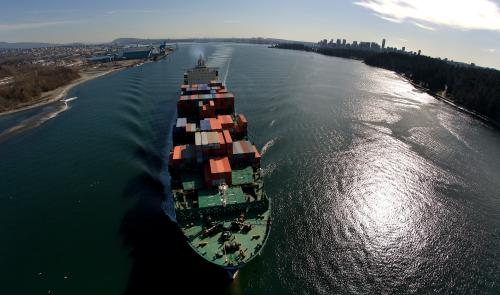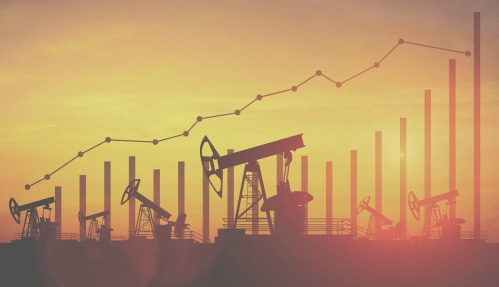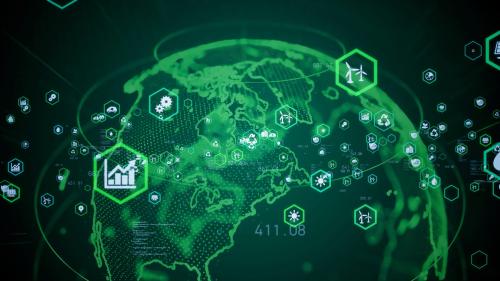Intergovernmental Panel on Climate Change (IPCC) research suggests that the world needs to reduce global greenhouse gas emissions by 45% by around 2030, and achieve net-zero emissions by 2050, in order to avert the worst impacts of climate change. However, meeting such long-term goals will require deep cuts in emissions in the coming decades, including in transportation where emissions are projected to increase significantly by 2050, absent new actions.
In 2020, COVID-19-induced shutdowns led to rapid declines in transportation emissions, as people stopped commuting and travel, and many businesses were forced to close. In areas with tight lockdowns, road transport saw declines as high as 50% to 75% in the spring. Meanwhile, freight transport declined somewhat, while passenger aviation demand plummeted. As the coronavirus pandemic persists, it remains to be seen how quickly economic activity and pre-pandemic transportation trends re-emerge, particularly in hard-hit countries like the United States, Brazil, and India. However, underlying fundamentals of the transport sector have not changed, and in the United States, as states slowly lifted restrictions in May and June, road, aviation, and shipping transportation emissions began to rise once again.
In new Brookings research, Samantha Gross examines key challenges to decarbonizing heavy transport, including heavy-duty freight, maritime, and aviation. Several observations emerge:
1Global transportation emissions continue to grow.
Transportation accounts for approximately one-quarter of global greenhouse gas emissions, and emissions continue to rise. Pre-pandemic, transport made up 29% of global primary energy use and 25% of global energy-related carbon dioxide emissions. Further, transportation emissions have more than doubled globally since 1970, and heavy-duty transport is among the fastest-growing sectors. Although the coronavirus pandemic brought significant declines in transportation emissions, as economic activity resumes, demand is again expected to rise, particularly in the developing world. The figure below shows the increasing share of transportation sector greenhouse gas emissions in countries outside the OECD over time.
Transportation sector data by country, excluding aviation and shipping, 2016. Sources: World Resources Institute’s CAIT emissions data and OECD country delineations.
2Barriers to decarbonizing heavy transport persist.
Ideal transportation fuels are energy-dense, meaning they contain a great deal of energy per unit of weight or volume. In heavy-duty transport — such as trucking, shipping, and aviation — moving heavy goods or significant numbers of people long distances make the energy density of the fuel important, as the fuel must be carried along with the load. In aviation and shipping, there are often no re-fueling options mid-trip. For these reasons, heavy transport still remains reliant on oil, with the International Energy Agency estimating that oil demand in aviation will increase more than 50% by 2040, and 25% in trucking.
Using today’s fuels, efficiencies can be gleaned through upgrading to more efficient vehicles and route efficiencies such as freight corridors. Several countries have now developed heavy-duty vehicle fuel efficiency standards, including the European Union, Mexico, Japan, the United States, Argentina, and Canada.
3Emerging technological opportunities expand possibilities.
Heavy-duty road transport includes many types of vehicles and some of these, such as buses, delivery vehicles, and drayage trucks at ports, are relatively easy to electrify. Long-distance trucking is more difficult; expansion of the electricity grid to accommodate the high load of rapid charging is an important step. The low energy density of batteries means that electrification is not a viable option for airplanes or ships. Low-carbon alternative fuels such as bio-based fuels, hydrogen, or synthetic fuels made of carbon dioxide, are likely routes for decarbonization in these modes of transport.
Many of these technologies are expensive or untested at scale, pointing to the need for public-sector investments in research and development to spur private-sector innovation. Additionally, technology-neutral policy standards, like zero emissions vehicle requirements, are useful policy levers. Policymakers must strike an important balance between reducing emissions today, while also supporting the continuing development and piloting of new technologies and next-generation fuels.
To learn more, read the full paper here.







Commentary
Heavy transport is a big carbon emitter — how can we change course?
October 1, 2020